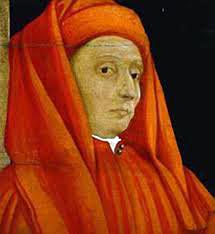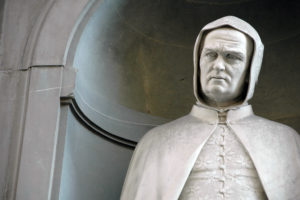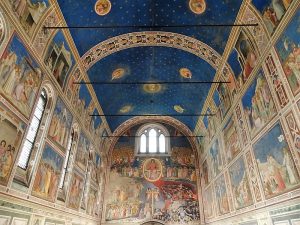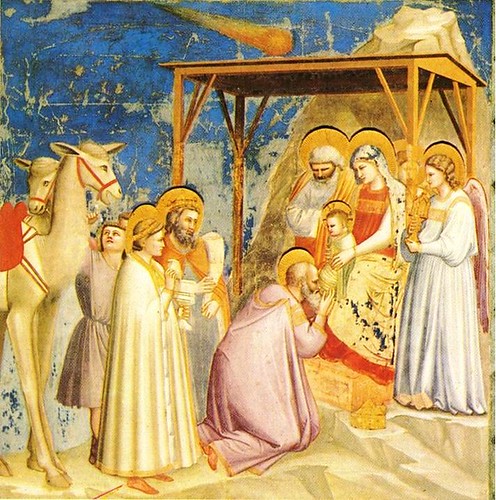Giotto da Bondone was the greatest italian painter before Renaissance. Initiator of a new figurative art style, oriented towards naturalistic and humanistic subjects, in opposition with Byzantine rigidity. He was revolutionary and an inspiration for all the later Italian Renaissance artists.

Life
Giotto di Bondone born in 1267 and died in January 8, 1337 in Florence, simply known as Giotto, he was an Italian painter and architect. He’s believed to have been a pupil of the Florentine painter Cimabue and to have decorated chapels in Assisi, Rome, Padua, Florence, and Naples with frescoes and panel paintings in tempera. Because little of his life and few of his works are documented, attribution and a stylistic chronology of his paintings remain problematic and often highly speculative.

image source: https://search.creativecommons.org/photos/959d4f0b-4c3d-4825-a12b-1af97d841354 by McPig
What were his major works?
Among the most important works of Giotto there is the Cross of Santa Maria Novella, realized in Florence around 1290, in which the imagine of Christ moves away from iconography. When he goes to Padua he creates a cycle of frescoes for the Scrovegni Chapel in which some saint’s life and the allegories of Vices and Virtues and the Last Judgement are narrated.
Other important works are the Ognissanti Madonna, the frescoes in the Basilica of Santa Croce, the Peruzzi Chapel where the Life of Saint John the Baptist and Saint John the Evangelist are frescoed and the Life of Saint Francis in the Bardi Chapel.

image source: https://search.creativecommons.org/photos/f931be66-1ca6-45b7-8ef2-de74be65dc9e by Prof. Mortel
Giotto was also an appreciated architect, in fact he built the first part of the Bell Tower for the Opera del Duomo, which later took his name. Unfortunately, many of Giotto’s works have been lost or destroyed, while those found are shown in some international museums.

image source: https://search.creativecommons.org/photos/ae787285-2f5b-4235-adcf-e913b3121d94 by nathanh100
How can we identify Giotto’s style?
The main subject in Giotto’s works is the human beings, characterized by the expressiveness of their feelings and moods, all this rendered with great realism creating the illusion of space overcoming the Byzantine style. Giotto’s figures are solidly three-dimensional, they seem to come to life due to a close observation of the faces and gestures, even the clothes appears to hang naturally highlighting the shapes and the heaviness of the fabric.

image source: https://search.creativecommons.org/photos/b3347f14-c202-4c52-a225-cef8436ea053 by Prof. Mortel
- COMPOSITION
Giotto was able to involve the viewer in the work, thanks also to the way he arranged the subjects, allowing the viewer to integrate. To focus the attention of the spectators he used horizon lines, diagonal lines and other types of geography.

image source: https://search.creativecommons.org/photos/59fa689d-42ee-4e5f-a528-d7fe893e0d04 by Carla216
- COLOR PALETTE
Di Bondone goes against the tradition of his period, substituting the blue for the sky in favor of the gold preferred by Medievalists. His subject’s faces, clothing and hair are characterized by the use of authentic colors such as bold green, orange, yellow and red allowing in this way to communicate emotions.

image source: https://search.creativecommons.org/photos/0b6459a7-ee6d-4f16-971e-f485ae24702c by ancientartpodcast.org
- USE OF LIGHT /SHADE
Thanks to a careful use of lights and shadows, Giotto has been able to give weight and shape to his subjects, thus transmitting a sense of reality to the viewer. The use of this technique, defined chiaroscuro, made sure that the body parts of the subjects represented were emphasized.

image source: https://search.creativecommons.org/photos/d92d1fd9-a220-49ff-9dbf-8dd386f3e9c3 by George M. Groutas
- MOOD, TONE & EMOTION
Giotto’s work clearly shows the attention he places on human expressions, studied through careful observation of the various emotional states, such as fear, joy, anger, despair and many other. In this way the subjects represented preserve their humanity.

image source: https://search.creativecommons.org/photos/d1a1b479-ad21-4f1f-8bfa-15e444b140db by Rufus46
info source:
http://www.giottodibondone.org/
https://www.discovertuscany.com/tuscany-history-and-culture/great-tuscans/giotto.html
https://www.britannica.com/biography/Giotto-di-Bondone#toc234069main
https://en.wikipedia.org/wiki/Giotto#Style
http://www.artble.com/artists/giotto_di_bondone/more_information/style_and_technique
